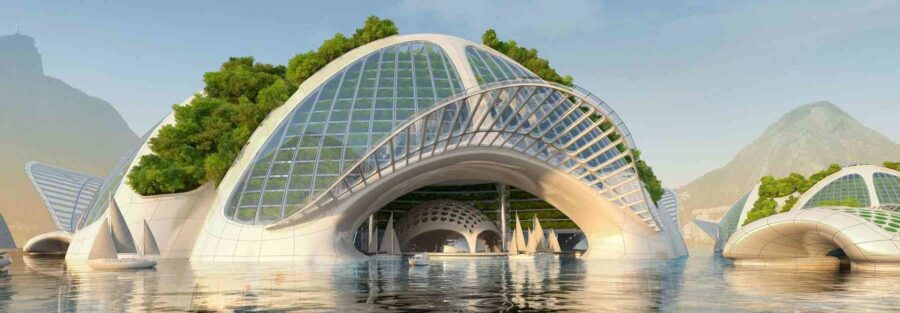The convergence of biotechnology and architecture has ushered in a new era of design innovation that blurs the boundaries between the natural world and the built environment. This article delves into the fascinating realm of biotechnology in architecture, exploring how the integration of living organisms, bio-materials, and advanced technologies is redefining the possibilities of sustainable, adaptive, and resilient design.
Biotechnology in Architectural Design: A Paradigm Shift:
Biotechnology involves the use of living systems and organisms to create products or processes with practical applications. In architecture, biotechnology transcends traditional building methods, integrating organic elements into structures to achieve a harmonious balance between human needs and the environment.
Living Facades and Green Infrastructures:
Biological Facades: Explore how living facades, covered in vegetation or microorganisms, contribute to improved insulation, air quality, and aesthetics. Examples of living walls and facades that host plant life, algae, or even microorganisms demonstrate the integration of biotechnology and design.
Bio-mimetic Design: Discuss how biotechnology draws inspiration from nature’s efficiency. The application of bio mimicry principles leads to innovative solutions in form, function, and material usage.
Bio-fabrication and Synthetic Biology:
3D Printing with Living Cells: Detail the revolutionary concept of bio-fabrication, where living cells are used as building blocks for architectural components. Touch on recent advancements in 3D bio printing technology.
Synthetic Biology Applications: Discuss the potential of synthetic biology in producing bio-materials, such as self-healing concrete or bio-luminescent materials, which have the potential to transform architectural functionality and aesthetics.
Responsive and Adaptive Environments:
Smart Bio-reactive Materials: Examine how biotechnological advancements are leading to the development of smart materials that respond to environmental stimuli. These materials adapt to changing conditions, enhancing energy efficiency and user comfort.
Living Architectural Systems: Introduce the concept of living architecture, where biological systems are integrated into buildings to create self-regulating environments. Examples might include living roofs that support biodiversity and filter rainwater.
Environmental Sustainability and Circular Design:
Closed-Loop Systems: Explore how biotechnology supports circular design by closing resource loops. Biological systems are employed for waste-water treatment, organic waste management, and energy generation within buildings.
Carbon-Positive Architecture: Discuss the potential of biologically enhanced materials to sequester carbon and contribute to a carbon-positive built environment.
Challenges and Ethical Considerations:
Regulatory and Safety Concerns: Address concerns regarding the ethical and regulatory aspects of incorporating living organisms into architectural designs.
Long-Term Viability: Reflect on the durability and long-term viability of biotechnological solutions, considering maintenance, adaptability, and potential environmental impacts.
Collaboration and Interdisciplinary Exploration:
Architects and Biologists: Highlight the growing collaboration between architects and biologists, emphasizing the importance of interdisciplinary approaches in realizing biotechnological architectural visions.
Education and Research: Discuss the need for education and research initiatives that bridge the gap between architecture and biotechnology.
Future Horizons and Imagination:
Emerging Innovations: Provide a glimpse into upcoming innovations, such as buildings that breathe, self-repair, and adapt to changing climates.
Human-Centric Biotechnology: Speculate on the potential for biotechnology to enhance human well-being by creating symbiotic relationships between occupants and architectural elements.
Conclusion: Biotechnology’s integration into architecture is more than a trend; it’s a transformative shift towards a future where buildings are not merely static structures but living, responsive organisms. As architects, scientists, and innovators continue to collaborate and push boundaries, the resulting architectural landscapes will bear the mark of this symbiotic relationship between nature and design.



